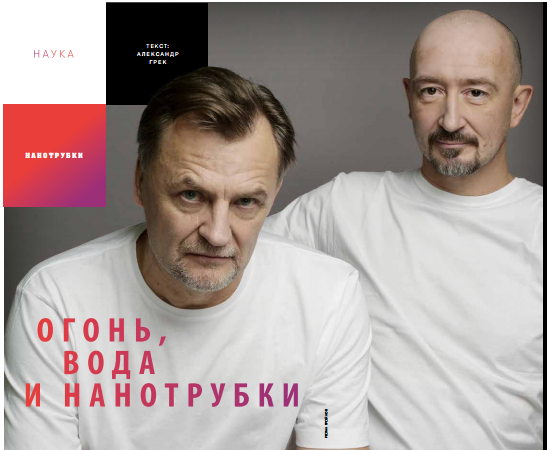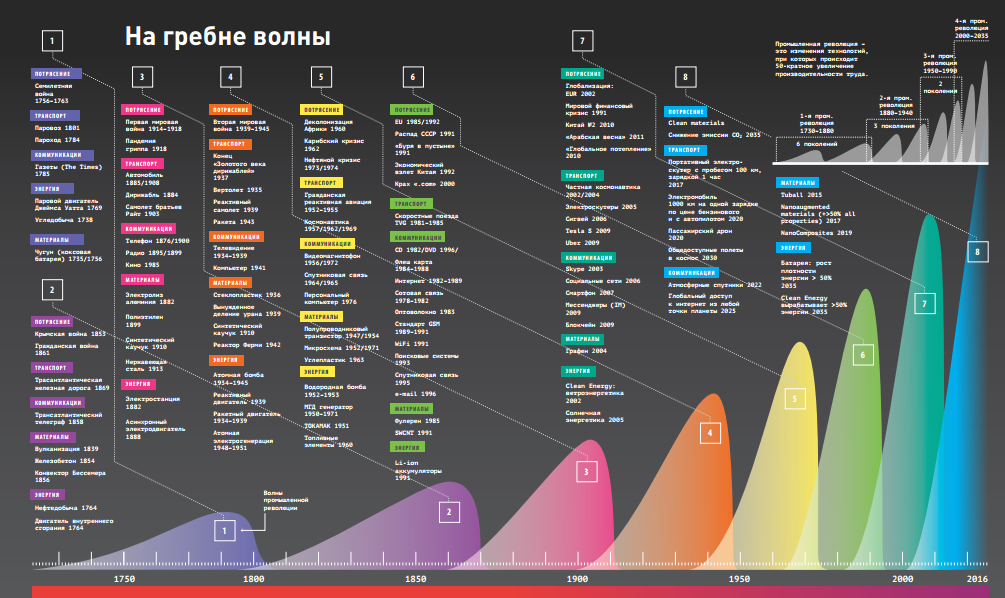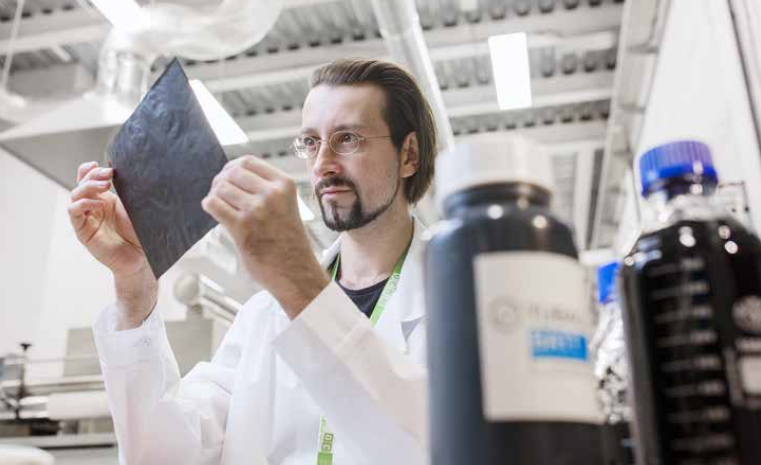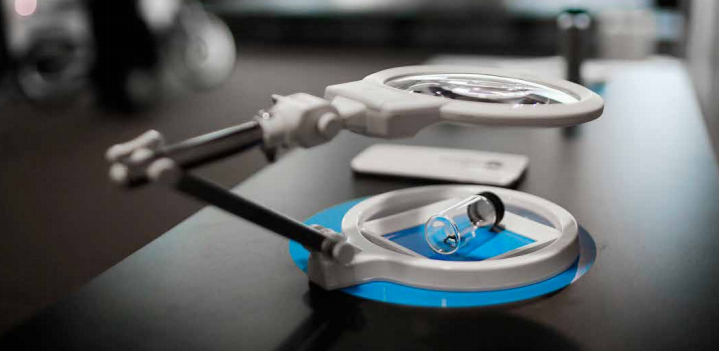
Last November the suburb of Akademgorodok in Novosibirsk, Siberia, greeted me with the purest pine-scented air, fluffy snow and a temperature of −26°C. It instantly reminded me of the first time I arrived here almost 35 years ago, plywood suitcase in hand, to enrol at the famous specialised boarding school of physics and mathematics. Every year, thousands of school Olympiad winners flocked to Akademgorodok. The idea of the creator of this Novosibirsk suburb, the legendary Academician Mikhail Lavrentyev, was simple in theory yet incredibly difficult in practice: to concentrate in one place a range of Soviet academic research institutes, a top university and a school, bringing together talented minds and modern production facilities that would all benefit from high-tech synergy. Lavrentyev managed to realise his dream almost entirely, except for one part – no high-tech production facilities have yet appeared in Akademgorodok.
My visit to Akademgorodok was to participate in a summit on nano-modified materials, at the invitation of Yuri Koropachinsky, my friend from our university days who is now president of a company with the jawbreaking name of OCSiAl. To be frank, I have attended a whole lot of various nanotech conferences, and I have previously written about nanobricks and nanosocks. My sole real purpose for this trip to Siberia was thus to meet up with Yuri himself, whom I haven’t seen in person for about 20 years. Having said that, the two days I spent in Akademgorodok have significantly altered my view of the world we live in and, more to the point, of the one we are going to live in.
A BEACH IN SYDNEY
Our story began 10 years ago, when Yuri Koropachinsky was preparing to go to the beach one morning, after a glass of fine Prosecco. In the previous 15 years he had become a successful businessman, and by the 40th birthday he and a group of friends were owners of a timber business, a large farming equipment company and shares in a large bank. It was all stressful work so, at a certain point, they decided to liquidate all assets.
I THOUGHT TO MYSELF: WHO WOULD MY SON BECOME IF HE SEES HIS FATHER WITH A GLASS OF PROSECCO EVERY MORNING AND WALKING TO THE BEACH EVERY LUNCHTIME? THIS WAS MY PIVOTAL MOMENT.
So, instead of 35 thousand employees and a constant financial deficit, they then had a thousand times more money and a thousand times fewer employees. What else does a man need to serenely accept old age when it comes? So it was with these sorts of ideas in his mind that Yuri cast a glance at his then 5-year-old son and thought: “Who would my son become if he sees his father with a glass of Prosecco every morning and walking to the beach with a surfing board under his arm every lunchtime? This really was the pivotal moment for me,” says Yuri, the son of the famous dendrologist Igor Koropachinsky. “I remember being 5 years old myself and every year, as soon as the snow started to melt, my father would get into the expedition car and drive off. And when the snow would start falling again, the expedition car would return and Father would emerge, with a long beard. This was the best what he did for my education. ”lSo, Yuri decided to return into business. In his earlier career he had mostly been involved in management of half a dozen factories with tens of thousands of workers; this time, he decided to do something else, unrelated to industrial activities. Remembering his days as a young researcher in the Akademgorodok, he decided to invest in a high-tech business and bought himself a ticket to Novosibirsk.
FUN TELEPHONE
Koropachinsky and his partners sought ideas and people within the walls of the Siberian Division of the Russian Academy of Sciences. During the Presidium of the Siberian Division, sitting at Lavrentyev’s legendary round table, 23 Academicians subjected Yuri to an extreme interrogation. “I told them that the money of the Siberian Division did not interest me, the real estate of the Siberian Division did not interest me, nor the patents of the Siberian Division,” recalls Koropachinsky. So, one of the presiding Academicians remarked mischievously: “What about the land?” “No, the land does not interest me either.” Yuri heard a collective sigh of relief, and someone said: “But we have nothing else!” So Yuri replied: “I am looking for ideas.” The reaction was stunning: “Ah, ideas! We have plenty of those. Take your pick!” So, Yuri obtained a licence and, from 2006 to 2009, his team carefully evaluated 23 research institutes in Akademgorodok, Tomsk, Krasnoyarsk and Irkutsk. It took 3 years to review 1500 ideas. Yuri and his team were looking for things in the domains in which they considered themselves competent: physics, chemistry and biology. As the company had neither programmers nor mathematicians, the IT sector was excluded from the start.
“The workflow was organised like this: our guys would come to the Institute’s Director and ask: ‘Can you please put us in touch with your most prominent scientists?’ Then we would invite two to five people and ask them one question: ‘What is it that you can do that no one else in the world can, or is there something you are best at? Anything at all.’ And if the answer seemed even remotely applicable to real life, we would proceed to more questions. In the end, 1500 ideas were gathered. 364 projects originated from these ideas, each receiving a small investment in order to test their technical feasibility, the potential marketability and the amount of capital that would be required. Some of the projects were quite amusing. One scientist declared that he was capable of manufacturing a telephone of joy. And then he produced an official document from the Russian Ministry of Communications stating that this man can indeed make fun telephones. ‘And how does it work? Well, you can imagine, it works just like any ordinary cell phone, but when you use it – you feel happy.’”

NO WAY OUT
Three years went by in this way. Yuri and his partners spent almost $2 million and, finally, out of the 364 original projects they selected 12, which were then converted into companies and provided with funds.
By that time it became obvious that there is no easy exit strategy from these venture investments. 99 % of successful exits of venture capital funds, for example the Silicon Valley ones, consist of resale of the technology, team and company to investors of the next level. In Russia, however, you not only have to assemble the team and build it to a certain level, you also have to sell products and generate income in order to fully realise its potential. There is almost no other way to successfully exit venture capitals. But doing this is a task of completely different proportions. Create a team, elevate it and sell it, for example, in 3 years’ time, or nurture it for 15 years, create the schemes of management and production – these are completely different tasks. For this reason, to start up 50 companies in 50 industries and to bring them to maturity is unrealistic in such conditions. So Yuri began to look for alternative ways. Furthermore, not one of the chosen 12 projects had what it takes to change our future. “To shed reality,” as Koropachinsky puts it. And then he was introduced to Mikhail Predtechensky, a true-life genius living, incidentally, in Akademgorodok.
SIMPLY GENIUS
Why they only met so far down the road will remain a mystery, as Predtechensky was known to everybody in Akademgorodok. He had been one of the youngest chiefs of laboratory, the favourite pupil of Academician Vladimir Nakoryakov, and, at the time of that meeting, he had already spent 20 years in the high-tech business, developing technologies for HP, Air Products (the world’s leading industrial gas manufacturer) and Samsung. In the West, they call Mikhail simply “the Russian genius”. And so, when Koropachinsky asked him the same question – “What is it you can do better than anyone in the world?” – Predtechensky’s reply was short: “Everything.”
Talking to Predtechensky is a rare but incredible intellectual pleasure. He does not simply think faster than you do, his thinking is beautiful and paradoxical. So it was only a few minutes into the conversation with Koropachinsky that Mikhail proposed to him that he should approach the question from another side altogether – the deductive one: “Let’s do it the other way around. I know my area of competence. Name a product that you want to obtain, and I will create the breakthrough technology if it is at all feasible. If you ask me whether I can implement thermonuclear fusion I will say ‘No’. But to anything else I will most probably say ‘Yes’.” Yuri and his partners had finally seen the light at the end of the tunnel and started enthusiastically thinking up such products. They quickly agreed that it would be best to concentrate on materials, energy and their conversion – there is nothing more fundamental than that. In the end they came up with six ideas. In fact, all of the ideas were formulated by Predtechensky, with others analysing them for feasibility and from a business perspectives.
VERY SMALL TUBES
“And I also know how to synthesize nanotubes,” said Predtechensky during one of the brainstorming sessions. “What are these nanotubes?” – Koropachinsky was intrigued. Mikhail told him that for half a century the world has not seen any new materials, and that modern “supermaterials” hardly differed from their simpler counterparts. The strength ratio of titanium compared to steel is only about three. The ratio of 10 simply does not exist. Carbon fibre with high-modulus fibre has a strength ratio in the vicinity of 1.5–1.7 GPa, whereas a single wall carbon nanotube has one of 50. And that’s not all. It is five times lighter than steel. So the actual ratio is 250! A particular component, equivalent to a steel one but made of nanotubes, if those are ideally connected, would be 250 times lighter. A car that’s 250 times lighter – can you imagine? It would be blown over by a breeze. A 4 kg car.
Furthermore, the world did not yet have mass production of nanotubes – they were manufactured only in laboratories and their price exceeded $150,000/kg. This discussion took place in 2009 and, by February of 2010, Yuri Koropachinsky with his partners and Mikhail Predtechensky had founded the OCSiAl company. It was also decided to close down all of their other high-tech projects.

PLASMA REACTOR
Within just one month, Predtechensky obtained his first nanotubes in an experiment. Their quantity was minuscule, just several black dots on a white lab filter. But the electron microscope showed them to be the single wall carbon nanotubes that they were after. Mikhail Predtechensky had created them in his plasma generator – another one of his fundamental inventions. The thing is that plasma generators, or plasmatrons, are used in many spheres. Predtechensky’s first encounter with them had happened when he worked on a project for Air Products. Powerful plasmatrons could not operate for long periods, even in inert gas environments – the electrodes burned out. For decades, scientists and technologists wrestled with the problem of creating a material for those electrodes that would “stand the stress”, but to no avail – their running time was still measured only in seconds. When Mikhail tells the story it all seems so simple: “And then I thought, why do electrodes need to be solid? Let’s make them liquid. Two trays of a molten mass with an arc between them. The arc ignites, melts the initially solid metal and two pools of metal are formed, shorting the arc. And the liquid is not susceptible to erosion. I made such a machine that can work for ever, in any environment, with any kind of power.”
FOR DECADES, SCIENTISTS AND TECHNOLOGISTS WRESTLED WITH THE PROBLEM OF CREATING A MATERIAL FOR THOSE ELECTRODES THAT WOULD “STAND THE STRESS”, BUT TO NO AVAIL – THEIR RUNNING TIME WAS STILL MEASURED ONLY IN SECONDS. AND THEN I THOUGHT, WHY DO ELECTRODES NEED TO BE SOLID?
Ordinary plasmatrons operate in inert gas environments, as the erosion of their electrodes is directly proportional to chemical activity and temperature. For example, they disintegrate almost immediately in water vapour. But in Predtechensky’s plasmatron, you can inject anything, even chlorine, as it is in fact a plasmochemical reactor. Many metallurgical and chemical processes could be changed in a radical manner. Mikhail has long tried to sell his invention: he negotiated with oligarchs and he even tried to make a reactor for destroying super-toxic waste. “The key moment was our encounter with Yuri,” he recalls. “He turned out to be the right man. On the one hand, he was a representative of big business with lots of money; on the other, he was the son of an Academician, with our classical education. We quickly made a connection. Just before our first meeting I was at the RUSNANO exhibition and I had carefully noted every way of using nanotubes that people were coming up with. Ever since the moment of their discovery I had followed their progress but I did not know yet what they would be good for. However, when I saw the way in which they could be introduced into all kinds of materials, I knew that they would have a fantastic future.”
GRAPHENE NANOTUBES
If you search the Internet you will find that Novosibirsk is not the only place where mass production of carbon nanotubes is carried out. However, the difference is in one small detail – the Akademgorodok facility produces single wall nanotubes while the rest of the world manufactures multiwall ones. This makes the crucial difference. “A multiwall tube is a ‘rolled’ tube of graphite” – Yuri Koropachinsky tries to put it in layman’s terms – “and a single wall tube is made of graphene. If graphene had been discovered earlier than nanotubes, they would have been called graphene tubes. These are different materials with radically different properties. The distance between them is similar to the one between a diamond and a lump of coal, even though both are composed of carbon. A multiwall nanotube is a marketing trick. They say that they have a similar product but just with thicker walls. The correct names are graphite tubes and graphene tubes. We produce a tubular version of graphene that consists of one atomic layer, whereas they do not. More than that, in some operating modes our reactor synthesizes flat sheets of graphene but for the moment we do not see any market niches where such graphene would outperform nanotubes. And if we did see one, we would be the first in the world to come up with a commercial batch.”
OCSiAl did not actually come up with a commercial batch of graphene nanotubes for ages. From 2009 to 2012, $20 million was pumped in to the project and 11 prototypes were built. After that, Koropachinsky gathered up some filters with the black dots of nanotubes and took a plane to see Anatoly Chubais, the head of RUSNANO. Chubais looked the samples over carefully and said one word: “Impressive”. After a moment, he added: “Do you want to build a reactor? What would be the production capacity? A tonne per year? Do you know that last month Bayer launched a reactor with a capacity of 500 tonnes of multiwall nanotubes per year?” Koropachinsky replied: “Yes, I know. So what? They will close in 3 years’ time.” When retelling this story, Yuri starts to laugh: “And you know what? In 3 years’ time, to the month, Bayer shut down their reactor. Because multiwall nanotubes are bloody useless.”
Chubais believed in these arrogant entrepreneurs from Siberia, and RUSNANO invested $20 million into the company, becoming its first external investor. It is said that this is the best investment of the state corporation so far. When answering the question as to why, when the investors were loaded with money themselves, OCSiAl needed RUSNANO (over $150 million has so far been invested into OCSiAl), Koropachinsky explains: “With a project this big, you will need investors sooner or later. And when you are building a company with your own money, you end up with a ‘family company’. Investors are not interested in family companies – the management, the decision-making system, the management requirements are all different in family companies. In order to make a public company – and the world is being taken over by public companies – it has to be built differently right from the start. And you have to learn to take into account the opinion of the external investor right from the start as well. In that respect, RUSNANO was ideal.”

GRAPHЕTRON 1.0
With the money from RUSNANO, the first industrial research reactor, the Graphetron 1.0, was built in Akademgorodok – the more successful counterpart of the Skolkovo Innovation Centre near Moscow. In 2015, this reactor synthesized 1250 kg of single wall carbon nanotubes (SWCNT), which have been commercialised under the brand name TUBALL™. In 2016, the output was 4 tonnes, and this year it should reach 7–10 tonnes. And right next door, construction of the industrial-scale Graphetron 50 – designed, as can be guessed from its name, for a capacity of 50 tonnes per year – is already well under way. Is that a lot or will it not be enough? Before the launch of Graphetron 1.0, the commercial price of SWCNT was $150,000/kg. “Wow, people are buying the stuff for $150 million a tonne! And we can sell it 100 times cheaper. They will be queueing up in front of our entrance!” – Koropachinsky rubs his hands together. “But I think that all the agencies were wrong and are still wrong. I think that no commercial sales had ever taken place anywhere before our appearance on the market. Small quantities were supplied for research purposes. It was bought and sold in grams, like cocaine.” For example, NASA tried to implement this material in satellites but could not progress the project because they were unable to find a supplier of 100 kg a year. There was just none to be found. Only a few years ago, the potential global market for single wall nanotubes was estimated at 10 tonnes per year, but every year this estimate grows by several orders of magnitude. Two years ago, OCSiAl evaluated it at 145 000 tonnes, but now the figure stands at over 500 000. “Over the next 10 years, I see a thousandfold growth potential for the company.” When saying this, Yuri becomes serious. “We are currently the world’s only manufacturer.”
ONLY A FEW YEARS AGO, THE POTENTIAL GLOBAL MARKET FOR SINGLE WALL NANOTUBES WAS ESTIMATED AT 10 TONNES PER YEAR, BUT EVERY YEAR THIS ESTIMATE GROWS BY SEVERAL ORDERS OF MAGNITUDE. TWO YEARS AGO, OCSIAL EVALUATED IT AT 145 000 TONNES, BUT NOW THE FIGURE STANDS AT OVER 500 000. “OVER THE NEXT 10 YEARS, I SEE A THOUSANDFOLD GROWTH POTENTIAL FOR THE COMPANY.”
As production expands, so do the areas of application of graphene nanotubes. From the very beginning, OCSiAl has had high hopes for the demand from the lithium-ion battery, carbon fibre composites and tyre industries – it’s logical to enter areas where other forms of carbon are already used. Objects that use amorphous carbon in their manufacturing can be made 100 times better by using nanotubes instead. For example, the addition of just 0.01 wt.% of single wall nanotubes into the electrodes of lithium-ion accumulator batteries increases their capacity by 20%.
New areas of application are emerging right in front of our eyes. It is only recently that Professor Doron Aurbach from Bar-Ilan University in Isreal has saved almost an entire industry – the market for lead–acid batteries worth $38 billion annually. The thing is that, in the very near future, all car manufacturers will have to start installing “start–stop” systems in their cars, thus greatly increasing the charge–discharge cycle requirements of their batteries – from the current 300 cycles up to 800 cycles. At the moment, this is only possible using lithium-ion batteries. So, Aurbach has developed a technology involving the addition of single wall nanotubes that increases the number of these cycles for lead–acid batteries from 600 to 900. And there are hundreds of such examples.
During 2016, OCSiAl negotiated with 2500 potential clients – an average of 10 meetings every working day. In addition to its Russian sites, offices of the company are currently open in Luxembourg, Tel Aviv, Seoul, Hong Kong, Shenzhen and Columbus (Ohio), and there are representatives in Malaysia, the UK, Australia and Japan. In the coming years, the company plans to build reactors on every continent and in every developed country. What’s more, they have had the ability to do so right from the very start. But why then have the modern production facilities in Akademgorodok? “Because Predtechensky is here,” smiles Koropachinsky, “and also because for the moment we are operating an industrial research reactor. We are using the Graphetron to conduct fundamental research in physics – we work with academicians, full professors, researchers of all kinds. Akademgorodok is an ideal place for such research work. Why did we synthesize only 4 tonnes of nanotubes during 2016 instead of 7 tonnes? Because half the time the reactor was run in research mode. It is a powerful research installation. And as a side effect it synthesizes 98 % of the world’s nanotubes.”
SECRET MATERIALS
It is strictly forbidden to take photographs in the facility that houses the Graphetron 1.0. “Even I don’t have a selfie next to the reactor,” Koropachinsky laughs. “Worse than that, it is forbidden to even look at the Graphetron – when I enter the facility, it is draped in black cloth just like that stone in Kaaba. There are no exceptions, not even for an old friend from our university days. I have not seen such a level of secrecy even in military factories.” So the logical question arises – just how does OCSiAl plan to protect their technological know-how? “OCSiAl holds an umbrella patent,” says Yuri. When the invention does not contain any specific particularity, people try to come up with weird constructions, patenting for example the mode of synthesis of the catalyst. Any patent of this kind will inevitably be circumvented – it is impossible to cover a hundred parameters. A classic example: the hovercraft was invented in the USSR, and the patent text stated the angles of attack of the fan blades. A British patent immediately followed, specifying all possible other angles of attack. “And do you know the wording of the patent of the Singer sewing machine that has never been circumvented?” Koropachinsky laughs. “A needle with an eye in front.” That is all – you cannot make a sewing machine without such a needle. And ours is that kind of patent. Roughly speaking, it is formulated as: “By any imaginable and unimaginable way, you create a true nanoparticle that flies in a stream of any carburetted hydrogen gas in any mode, and a single wall nanotube grows on it.” If that’s it, then it’s covered by our patent; if it’s not, then it’s not. And that means we don’t need to disclose anything: neither the catalysts, nor the production process, nor the modes used.” “And who came up with such a patent?” I ask. “But of course, it’s Predtechensky.” Koropachinsky’s laughter is contagious: “who else in the world could come up with something like that?!”
